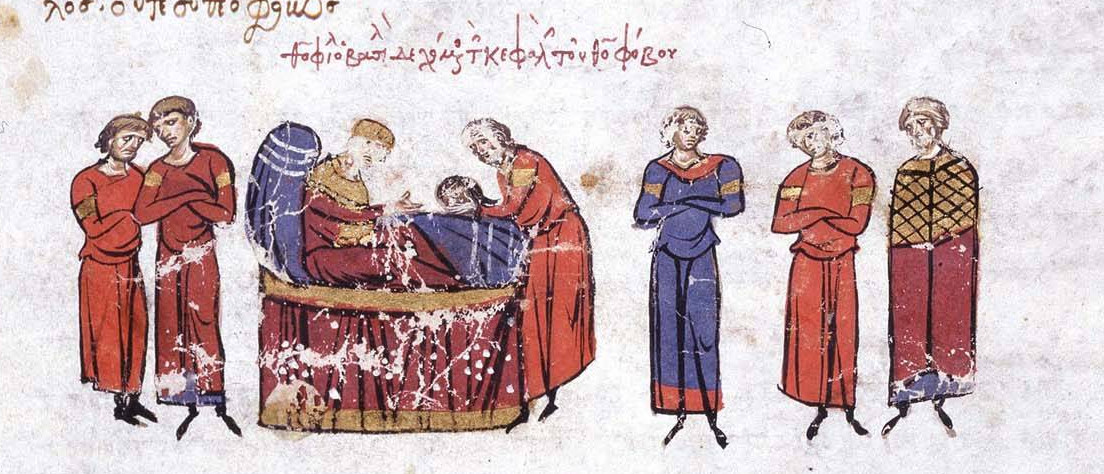Theophobos (Θεόφοβος), originally Nasir (ناصر), was a Kurdish commander of the Khurramite sect who converted to Christianity and entered Byzantine service under Emperor Theophilos (r. 829–843).
Raised to high rank and married into the imperial family, Theophobos was given command of his fellow Khurramites and served under Theophilos in his wars against the Abbasid Caliphate in 837–838.
After the Byzantines' defeat at the Battle of Anzen, he was proclaimed emperor by his own men, but he did not pursue this claim.
Instead he peacefully submitted to Theophilos in the next year and was apparently pardoned, until he was executed by the dying emperor in 842 to prevent a challenge to the accession of Michael III.
He was originally a member of the Khurramite sect in western Iran, which was being persecuted by the Abbasid Caliphate. In October/November 833, they were defeated by the armies of Caliph al-Mu'tasim (r. 833–842) under Ishaq ibn Ibrahim. In 834, Nasir with some fourteen thousand other Khurramites, crossed the Armenian highland and fled to the Byzantine Empire.
There, they converted to Christianity, were given widows from military families as wives, and enrolled into the Byzantine army in the so-called "Persian tourma". Nasir, now baptized Theophobos ("fearful/respectful of God"), was placed at the head of these troops, raised to the rank of patrikios and given the hand of either Theophilos's sister or a sister of Empress Theodora in marriage.
The addition of the "Persian" corps greatly strengthened the Byzantine military: not only were its members implacable enemies of the Arabs, but they may have raised the number of effectives in the Byzantine army by as much as a sixth.
A seal belonging to Theophobos affords him the style of "exousiastes of the Persians", indicating that Theophilos intended him to install as a ruler of a Byzantine-allied principality.
Above: The head of Theophobos is brought to Emperor Theophilos on his deathbed.
READ MORE: Plaza Uruguay: The story of an unknown square in the centre of Athens.


